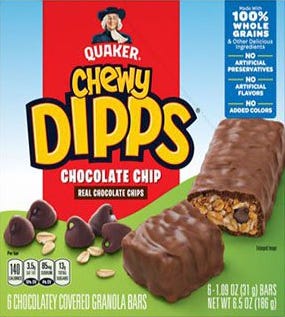Mainstream Mindset on Food and Pollution
TLDR - The mainstream belief is that methane emissions from cows are extremely harmful to the environment, prompting a push for alternative food sources. This narrative is incomplete as it overlooks the environmental impact of processed food alternatives. Financial motives likely influence the promotion of this perspective.
Methane from Cows vs. Processed Food Pollution
The dominant narrative suggests that methane produced by cows is one of the largest contributors to pollution. Indeed, cows do produce methane through enteric fermentation, and methane is a potent greenhouse gas. However, focusing solely on this aspect ignores the broader environmental impact of food production. Let’s compare two hypothetical individuals. One who consumes a diet of meat, fruits, and vegetables, and another who eats no meat but relies entirely on processed foods. Which lifestyle is worse for the environment?
The Meat, Fruits, and Vegetables Diet
For our first individual who eats meat, fruits, and vegetables, the environmental footprint primarily involves:
Methane Emissions: From the digestive processes of cows.
Agricultural Practices: Related to growing fruits and vegetables.
Plastics: Potentially used for packaging
The Processed Foods Diet
For our second individual who consumes processed foods, the environmental footprint is significantly more complex:
Factory Pollution: Factories producing processed foods contribute to air and water pollution through emissions and waste products.
Artificial Ingredients: Many processed foods contain artificial ingredients that are synthesized in chemical plants, adding another layer of pollution and resource consumption.
Energy Consumption: Factories require massive amounts of energy for production, packaging, and transportation.
Waste Production: Both solid and liquid waste from factories can be harmful to the environment. This includes packaging waste that often ends up in landfills.
EMF Pollution: Factories generate electromagnetic fields, noise, and light that can negatively impact local wildlife and ecosystems.
Plastics: Used for packaging
Comparative Environmental Impact
When comparing the environmental impact of these two diets, a more holistic view reveals that the processed foods diet likely has a more significant negative impact on the environment.
Resource Intensive: The production of processed foods involves multiple stages of manufacturing, each consuming vast amounts of energy and water. This multi layered production process is far more resource intensive than raising cows or growing fruits and vegetables.
Pollution: Factories emit various pollutants, including greenhouse gases, toxic chemicals, and particulate matter, contributing to air and water pollution. In contrast, cows primarily contribute methane and, to a lesser extent, nitrous oxide.
Waste: The waste products from food processing factories include chemical byproducts, packaging materials, and wastewater, all of which pose significant disposal challenges and environmental risks.
Human Health: Processed foods are often linked to health issues such as obesity, diabetes, and heart disease, which can create additional environmental and economic burdens through increased healthcare costs and resource use.
The Bigger Picture
Mainstream media’s focus on methane emissions from cows is a simplified narrative that overlooks the broader environmental costs associated with processed foods. While reducing methane emissions is important, it is equally critical to consider the comprehensive environmental impact of our food choices. How does nature naturally remove methane from our atmosphere? Maybe we should be supporting those practices instead of creating new and diverse pollutants.
Media Motives
It’s important to recognize that media narratives can be influenced by various motivations, including financial interests. Food industry giants often have significant influence over media content and public perceptions. As consumers, we need to critically evaluate the information presented to us and consider the broader context.
Processed Food Example
Look at these chocolate chip granola bars! They are made with 100% whole grains and “delicious ingredients”! Real chocolate chips and no artificial preservatives! Lets take a look at the ingredients. Oh wow. What are these? Let’s not even look at this from a health perspective. Where do all these ingredients come from? How many factories go into the production of this bar? Why is the pollution of this not in the news?
All of these ingredients likely come from different factories, each contributing its own pollutants. These ingredients are then transported across the world to reach the processing facility where this product is made. Now, mentally compare the image of a cow grazing in a field to that of numerous factories working to produce this granola bar. Which scenario seems more environmentally friendly?






